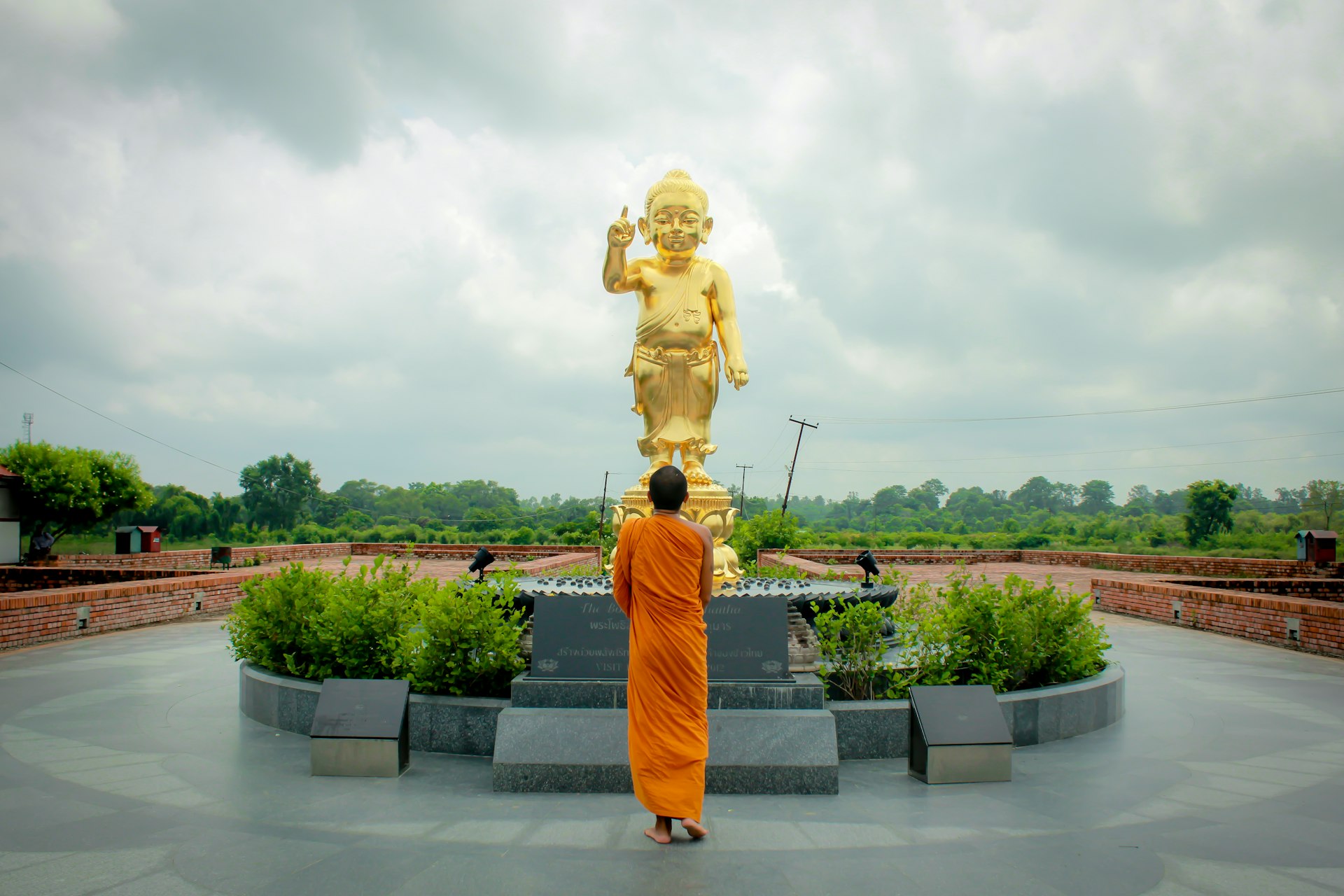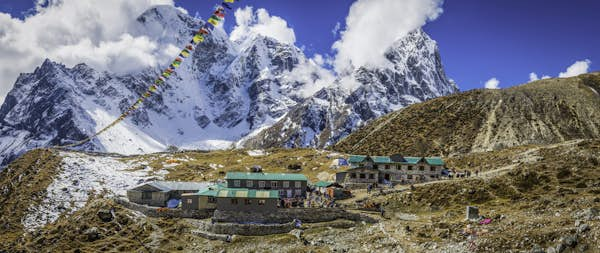Nepal may be small in size, but it’s diverse. Famous for its Himalayan mountains, the country is home to historic cities, wildlife-rich national parks, Hindu and Buddhist pilgrimage sites, tea plantations and much more.
When planning a trip to Nepal, you should decide on a destination based on your main activity. To go trekking, you’ll obviously head to the mountains. But which mountains? Different regions offer different experiences and can be a bit difficult to reach from the main cities.
Whether you want to take it easy or have more active plans, we’ve compiled a list of the best places to visit in Nepal to help you make the decision.
1. Kathmandu Valley
Perfect for historical palaces and temples
Almost every trip to Nepal begins in the Kathmandu Valley, so it’s well worth dedicating some time to the capital region. Historically made up of several separate kingdoms (most notably Kathmandu, Patan/Lalitpur, and Bhaktapur), the roughly 25 km (15 mi) wide Kathmandu Valley is now one large urban sprawl with increasingly less farmland surrounding it. The valley’s human history dates back thousands of years, and visitors can still see ancient temples and medieval palaces, and encounter traditional indigenous Newar culture amid the sprawling modern concrete buildings.
Of greatest interest to travellers are central Kathmandu, Patan and Bhaktapur. These three ancient cities make up a UNESCO World Heritage Site with seven distinct archaeological zones, including the Kathmandu, Patan and Bhaktapur Durbar (Royal) Squares, Pashupatinath Temple, Boudhanath Stupa, Swayambhunath Stupa and the Hindu and Buddhist ruins of Changu Narayan. The first six are popular tourist destinations, but Changu Narayan, on the northeastern edge of the Kathmandu Valley, is visited by far fewer people, so to avoid the crowds in peak season, it’s best to head there.
Planning tip: Despite common misconception, Kathmandu isn’t very high at 1,400 metres (4,600 feet). You’re unlikely to feel any effects from the altitude, and the weather is often hot, especially between March and October.
Ready to hit the road? Here’s your seasonal guide to the best time to visit Nepal
 Many people visit Nepal to see the amazing trekking routes and Mount Everest (Sagarmatha) © Westend61 / Getty Images
Many people visit Nepal to see the amazing trekking routes and Mount Everest (Sagarmatha) © Westend61 / Getty Images
2. Solukhumbu District
For the Great Mother Mountain Sagarmatha, also known as Everest
If the weather is really clear and you know exactly where to look, you might be able to catch a glimpse of just a small part of Mount Everest (Sagarmatha in Nepali, Chomolongma in Sherpa) from Kathmandu. Otherwise, to see the world’s highest mountain, you’ll need to head to the Solukhumbu district, northeast of the capital.
Since there are no roads to Everest (on the Nepalese side of the border), most people who undertake the Everest Base Camp trek in Solukhumbu district fly from Kathmandu to Lukla, a village a few days walk from the mountain. Solukhumbu is home to Sagarmatha National Park and is inhabited mainly by the Sherpa people, who have a unique culture of Tibetan origin.
Planning Tip: If you don’t have time to trek to the Solukhumbu area, take a scenic flight over Everest from Kathmandu to see the mountain views.
Prepare for your trek to Everest Base Camp with our planning guide
3. Mustang
Great for experiencing the flavors of Tibet
North of the Annapurna range, on the edge of the Tibetan Plateau, lies the desolate, windswept Mustang region, home to ethnic Tibetans. Take a short flight from Pokhara to Jomsom through the world’s deepest canyon, Kali Gandaki Valley, or take a bone-jarring 100-mile (160-kilometer) four-wheel drive, or trek the Annapurna Circuit.
Mustang is divided into Lower Mustang and Upper Mustang, and the distinction is important. While Lower Mustang is easily accessible to anyone (apart from the logistical difficulties of getting there), non-Nepalese tourists can only visit Upper Mustang on guided tours and must pay a hefty fee of at least $500 for a special 10-day permit, plus $50 per day thereafter. Attractions include the apple-growing village of Marpha, Kagbeni village on the Kali Gandaki River, the Hindu pilgrimage site of Muktinath Temple, and Upper Mustang’s walled capital, Lomanthang.
Planning tip: Mustang is nearly inaccessible during the monsoon season (June to early September) as roads become flooded and flights are frequently canceled, while winter can make access difficult, with extreme cold and snowfall expected, especially in Upper Mustang.
 Head to Pokhara for mountain views and serene lakeside experiences © Rupad Bajracharya / 500px
Head to Pokhara for mountain views and serene lakeside experiences © Rupad Bajracharya / 500px
4. Pokhara
Perfect for a relaxing lakeside atmosphere
Located 200 km (125 miles) west of the Nepalese capital, Pokhara is Nepal’s second largest city but is quite different to Kathmandu. Situated on the shores of Phewa Lake (Phewa Tal) and at the foot of the Annapurna Himalayas, Pokhara offers exceptional mountain views.
From here, you can drive or fly to faraway mountain towns, and many people stop in Pokhara on their way to or from treks in the Annapurna range. You can also row on the lake, enjoy affordable sundowners on the lakeside strip, go white-water rafting on the Seti River, paraglide from Sarangkot Hill, visit the Shanti Stupa (World Peace Pagoda) or ride the Annapurna Cable Car up to a lookout point beyond the mountains.
Planning tip: If you have respiratory illnesses or are traveling with children, you may want to prioritize Pokhara over Kathmandu due to its better air quality and less traffic.
5. Annapurna Himalayas
Ideal for numerous trekking trails
You don’t have to go far from Pokhara to reach the Annapurna Himalayas; treks into this range start from about an hour’s drive from the city. From the jagged and distinctive peak of Fishtail (Machhapuchhre) to the snow-capped mighty peak of Dhaulagiri, the Annapurna range is truly an impressive mountain range.
Active travelers have plenty of trekking options. Australian Camp/Dhampus and Poon Hill are great places to visit in Nepal with families as they are easy to trek and offer great views. If you have the time and energy, trekking in the Annapurna Circuit, Annapurna Sanctuary, Mardi Himal and Tilicho Lake are also options.
Planning Tip: If you are looking for the best places to visit on a 10-day Nepal trip, you could spend a few days each in Kathmandu and Pokhara, do a short trek in the Annapurna Himalayas, and enjoy a jungle safari in Chitwan.
Having trouble choosing a hiking trail? Check out our guide to the best routes in Nepal.
 Maya Devi Temple in Lumbini is believed to be the birthplace of Lord Buddha © Photohipster / Shutterstock
Maya Devi Temple in Lumbini is believed to be the birthplace of Lord Buddha © Photohipster / Shutterstock
6. Lumbini
Perfect for Buddhist temples and pilgrimage sites
Lumbini, on the western edge of Nepal, is a must-see for travelers interested in Buddhism. It is the birthplace of the historical Buddha, Prince Siddhartha Gautama. Lumbini is a UNESCO World Heritage Site and contains smaller sites directly related to the Buddha, such as Maya Devi Temple, where the Buddha is said to have been born, as well as temples and monasteries built by many Buddhist countries and groups from around the world. Lumbini has a small international airport and is a long drive from Kathmandu and Pokhara.
7. Chitwan National Park
Best place for a wildlife safari
Nepal isn’t all mountains: the jungle-covered plains of the Terai, which lies on the southern border with India, are home to a variety of birds and animals, including the endangered rhino (whose population has boomed in Chitwan over the past decade), Bengal tigers, gharials, Magh crocodiles and many species of deer and birds.
Chitwan National Park is the most popular of the Terai’s reserves and parks because it’s easily accessible from both Kathmandu and Pokhara. From the town of Sauraha, you can go on a safari in the park, visit a wildlife rehabilitation center, and learn about Chitwan’s indigenous people, the Tharu people.
Planning tip: A good time to visit Chitwan is in late January or early February, when locals have cut the long elephant grass, giving you a better view of the wildlife hiding there.
8. Ilam
Amazing views of the tea plantations and Mount Kanchenjunga
Often overlooked by travelers due to its slightly remote location in eastern Nepal, Ilam is the heart of Nepal’s tea production. Despite being adjacent to India’s tea capital, Darjeeling, Ilam is less known in the tea world, but it doesn’t need to be. Travelers can tour tea plantations and take in views of Mount Kangchenjunga, the world’s third highest mountain, which lies on the Nepal-India border north of Ilam. Trekking routes in this part of Nepal are similarly less well known, but there are plenty of options, including the rugged and challenging Kangchenjunga Circuit trek.
This article was first published on January 9, 2022 and updated on May 22, 2024.

